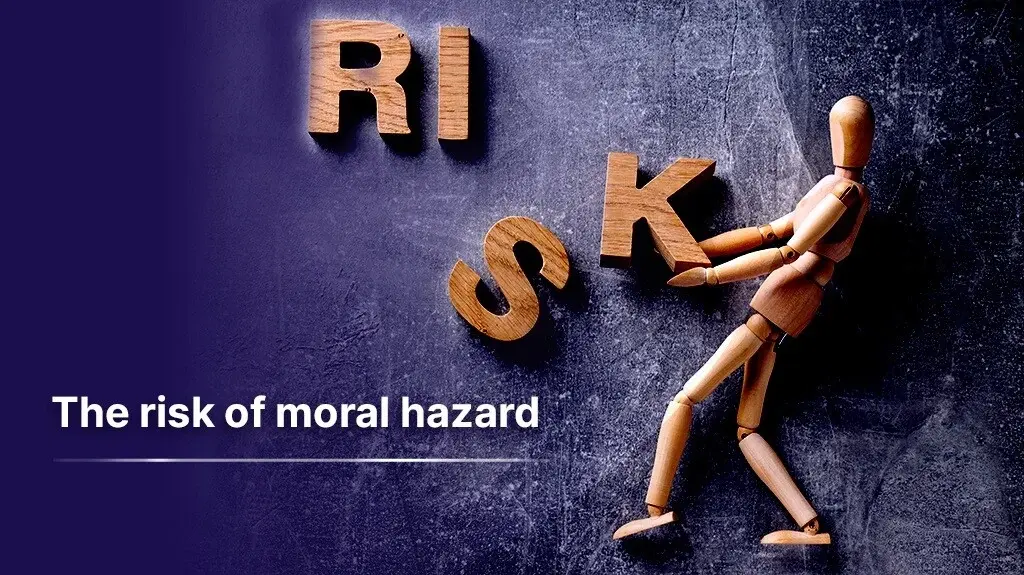Insurance fraud is a major vice today, costing insurers and their clients billions of dollars annually. This paper discusses insurance fraud solutions insurers can use to protect their businesses from the numerous losses that can ensue.
An Overview of Insurance Fraud Solutions
Insurance fraud is on an upward trajectory. Twenty percent of all insurance claims globally are suspected to be fraudulent, with insurance fraud in the US costing insurers and policyholders an estimated $80 billion each year.
While external parties have mostly orchestrated insurance fraud, internal actors in organizations are increasingly joining in, most notably with worker compensation fraud and fee churning by agents.
Other trends in insurance fraud to be aware of include:
- There is increased use of sophisticated technology to perpetrate insurance fraud. An interesting development is that criminals now use specially designed bots to file fraudulent claims.
- Fraudsters are more frequently using identity theft to commit insurance fraud. Criminals use stolen personal information to commit other crimes, but they also use it to commit insurance fraud.
- Perpetrators are more willing to inflict actual self-harm in an effort to “pass” more scrutiny by insurers.
- Criminals are now masquerading as insurance brokers or agents. They are using phishing schemes to fleece unsuspecting individuals seeking insurance policies.
Given the high stakes involved and the colossal losses caused by insurance fraud, it's best to consider this an undeclared war.
The Fraud Triangle
When developing or choosing insurance fraud solutions, it's important to understand and deter criminals’ capabilities. It's also to understand the commonalities shared by all insurance fraudsters.
Even with rapid technological advancements, the anatomy of insurance fraud, like other fraud forms, remains the same. Insurance fraud is enabled by three main factors commonly known as the fraud triangle: rationalization, motivation, and opportunity.
- Motivation is the driving force/behavior behind why individuals commit insurance fraud. Some common motivations include the desire to prove their ability to commit fraud and get away with it, financial distress, or good, old-fashioned greed.
- Rationalization is down to an individual's beliefs and assessment of the situation. This is different from motivation; their main concern is whether it's right by their or societal standards and whether they can pull it off safely or without major implications. This element is sort of like a criminal's cost-benefit analysis.
- Opportunity is the chance to act on the motivation to commit fraud. It could be a design loophole that can be bypassed or even catastrophic events which result in insurers being overwhelmed by claims causing less scrutiny on individual requests.
For most of this war, criminals have been on the offensive and insurers on the defensive. However, it's high time this order is disrupted.
Explore the Latest Innovations in Insurance Fraud Solutions
These are some of the technological solutions that have shown much promise as effective insurance fraud solutions:
#1. Block Chain
Blockchain is simply a distributed database that allows users to share and securely manage information in a tamper-proof manner.
One of the major "opportunities" utilized by fraudsters is the anonymity of online activities and transactions. Unfortunately, regulations designed to protect consumer privacy have only made it more difficult for insurers to get more insight into their customers' data and, by extension, criminals executing insurance fraud.
But by using blockchain, insurance companies can track the history of transactions and identify potential fraudsters more quickly and effectively.
#2. Predictive Modeling and Analytics
Predictive modeling can identify patterns and trends in data that human senses can't easily discern. These patterns can then be used to make predictions about future events. This information can then be used to improve policies and reduce the amount of fraud in the system.
Predictive analytics is a relatively new field that uses machine learning algorithms to make predictions about future events. When insurers understand what factors are associated with fraud, they can better predict which customers are more likely to commit fraud and take steps to prevent it.
#3. Cloud Computing
Implementing advanced tech solutions in fighting fraud isn’t always easy. At the top of the list of insurers' concerns regarding how they can utilize them has been the massive computing resource investment needed. In the same breath, investigators worry about the unsustainable costs associated with useful technologies.
However, cloud computing allows organizations to access computing resources remotely. This solution allows for faster and more efficient data processing at a fraction of the cost.
This way, insurers can enjoy the impressive capabilities of computer vision analytics or predictive analytics without investing in massive data centers and servers, which sometimes come with prohibitively high acquisition and operational costs.
#4. Social Media Analytics

Social media analytics is a crucial cog in lifestyle analytics, another key tool in insurers' arsenal.
For the longest time, insurers have relied on client self-reported data in their risk assessment and claim filings. However, this strategy didn't pan out well. Recently, insurers saw the need for alternative data sources like third-party cookie data to personalize the customer experience journey and combat fraud.
Despite their effectiveness in creating better profiles on individuals, third-party cookies won't be available as early as 2023. This has been triggered partly by more calls for privacy in the wake of the Cambridge Analytica scandal, forcing major firms like Apple and Google to act. Similarly, more stringent regulations are in the works in various jurisdictions to protect consumer privacy, all of which could soon complicate third-party data sourcing.
But, on the bright side, social media analytics can provide insurers with an unfiltered view of their clients. People lie mostly when they have a reason to. In regards to insurance, they may actively or inadvertently falsify their information; however, this is not so with social media.
For most of the population, social media is a great way to catch up with family or acquaintances and, for some, boast about their achievements. In such scenarios, most people let their guard down. They presume no one is watching. To counter the argument that people lie on social media (which is true in some instances), lying patterns can be easily uncovered on social media with the help of analytics.
By employing AI-enabled social media analytics tools, insurers can swiftly catch on to fraudulent claims before initiating payments. It can also be useful in post-event analysis and fraud investigation.
#5. Internet of Things
In the fight against insurance fraud, the Internet of Things (IoT) plays an important role. Insurers can quickly identify suspicious activity by leveraging sensors and data collection capabilities embedded in devices like smart meters, cameras, and drones.
IoT-enabled devices can make it more difficult for potential fraudsters to execute insurance fraud. Remember the fraud triangle?
When enabled, sensors onboard vehicles or on other insured property send data to the insurer's servers immediately after the insured event occurs. This removes the "opportunity element" since individuals have less or no time to alter evidence with these insurance fraud solutions in place.
#6. Physical and Behavioral Biometrics
Physical and behavioral biometrics can greatly curb identity theft, a significant enabler of insurance fraud.
As the name suggests, behavioral biometrics uses behavioral data to identify fraudulent behavior and prevent or detect fraudulent claims. For instance, a behavioral biometric system can track:
- How often a customer makes claims
- What claims they make
- Minor but unique details like how they interact with the insurer's app or website when filing fraudulent claims or applying for a policy
Similarly, physical biometrics analyzes unique features like vein patterns, voice, fingerprint patterns, or iris details.
This capability can help insurers identify which customers are likely to commit insurance fraud and take appropriate action. Also, it can help curb identity theft scams that can pass off as legitimate claims on the insurer's side but cause losses to genuine policyholders.
#7. Virtual & Augmented Reality (VR & AR)
VR can create realistic simulations of physical environments. Businesses can use these simulations to train personnel or investigate potentially fraudulent activity. VR has been used in investigations across various industries, including pharmaceuticals and banking.
VR isn't the only insurance fraud solution capable of combating insurance fraud. Augmented reality (AR) is also becoming increasingly popular. AR can overlay graphics on real-world objects, which investigators can then use to track down fraudulent activity or identify possible victims.
Final Thoughts on Developing Insurance Fraud Solutions
Insurance fraud is a huge issue that isn't going anywhere soon. As a result, many insurance companies are turning to technological insurance fraud solutions to track down fraudulent claims and reduce the amount of money that goes into fraudulent pockets.
By using cutting-edge technologies such as big data analytics and machine learning, insurance companies can identify patterns in claims and use that information to stop future fraud. To learn more about how Pilotbird's insurance fraud solutions work, request a demo.
References
4 Insurance Fraud Trends to Watch. (2022). Retrieved 22 July 2022, from https://www.iamagazine.com/markets/4-insurance-fraud-trends-to-watch
(2022). Retrieved 22 July 2022, from https://www.researchgate.net/publication/292980386_Big_Data_and_Specific_Analysis_Methods_for_Insurance_Fraud_Detection
(2022). Retrieved 22 July 2022, from https://iovation-japan.com/document/iovation-evolution-of-insurance-fraud-white-paper.pdf
(2022). Retrieved 22 July 2022, from https://ifb.org.nz/wp-content/uploads/2019/08/Insurance-Fraud-Bureau_White-Paper.pdf
AGA - Fraud Triangle. (2022). Retrieved 22 July 2022, from https://www.agacgfm.org/Intergov/Fraud-Prevention/Fraud-Awareness-Mitigation/Fraud-Triangle.aspx
Fraud Stats - InsuranceFraud.org. (2022). Retrieved 22 July 2022, from https://insurancefraud.org/fraud-stats/
FRISS - Insurance fraud report 2022. (2022). Retrieved 22 July 2022, from https://www.friss.com/insight/insurance-fraud-report-2022/?submissionGuid=9a9cae27-cea0-43f1-b6b1-39d0003f5689
Reimagining customer privacy for the digital age. (2022). Retrieved 22 July 2022, from https://www2.deloitte.com/us/en/insights/industry/financial-services/protecting-customer-privacy-financial-institutions.html
The Fraudster Next Door: 30 Insurance Fraud Statistics - Fortunly. (2022). Retrieved 22 July 2022, from https://fortunly.com/statistics/insurance-fraud-statistics/





Leave a Comment
Your email address will not be published. Required fields are marked *